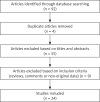Utility of biochemical tests in prediction, diagnostics and clinical management of preeclampsia: a review
- PMID: 33224336
- PMCID: PMC7667413
- DOI: 10.5114/aoms.2020.97762
Utility of biochemical tests in prediction, diagnostics and clinical management of preeclampsia: a review
Abstract
The most widely accepted theory for the development of preeclampsia is the "two-stage theory". An imbalance between antiangiogenic and proangiogenic factors is considered the link between the two stages. Nowadays, an increasing amount of data is available on the use of measurements of serum concentrations of these factors in the prediction, diagnosis and management of preeclampsia. The most useful, modern biochemical test that may help in making crucial clinical decisions in patients with preeclampsia is the sFlt-1/PlGF (soluble fms-like tyrosine kinase 1/placental growth factor) ratio. The aim of this review is to present the current use of different biochemical tests in the prediction, diagnosis and management of preeclampsia. Development of these diagnostic methods in recent years and a belief in their ground-breaking role in modern management of preeclampsia make this review especially important.
Keywords: antiangiogenic markers; endothelium; placenta; placental growth factor; preeclampsia; proangiogenic markers; soluble fms-like tyrosine kinase 1.
Copyright: © 2020 Termedia & Banach.
Conflict of interest statement
The authors declare no conflict of interest.
References
-
- Roberts J, Person G, Cutler J, Lindheimer M. Summary of the NHLBI Working Group on research on hypertension during pregnancy. Hypertension. 2003;41:437–45. - PubMed
-
- American College of Obstetricians and Gynecologists Hypertension in pregnancy. Report of the American College of Obstetricians and Gynecologists’ Task Force on Hypertension in Pregnancy. Obstet Gynecol. 2013;122:1122–31. - PubMed
-
- Magee LA, Pels A, Helewa M, Rey E, von Dadelszen P. Diagnosis, evaluation, and management ofthe hypertensive disorders of pregnancy: executive summary. J Obstet Gynecol Can. 2014;36:416–38. - PubMed
-
- Karumanchi SA. Angiogenic factors in preeclampsia. From diagnosis to therapy. Hypertension. 2016;67:1072–9. - PubMed
LinkOut - more resources
Full Text Sources
Miscellaneous

